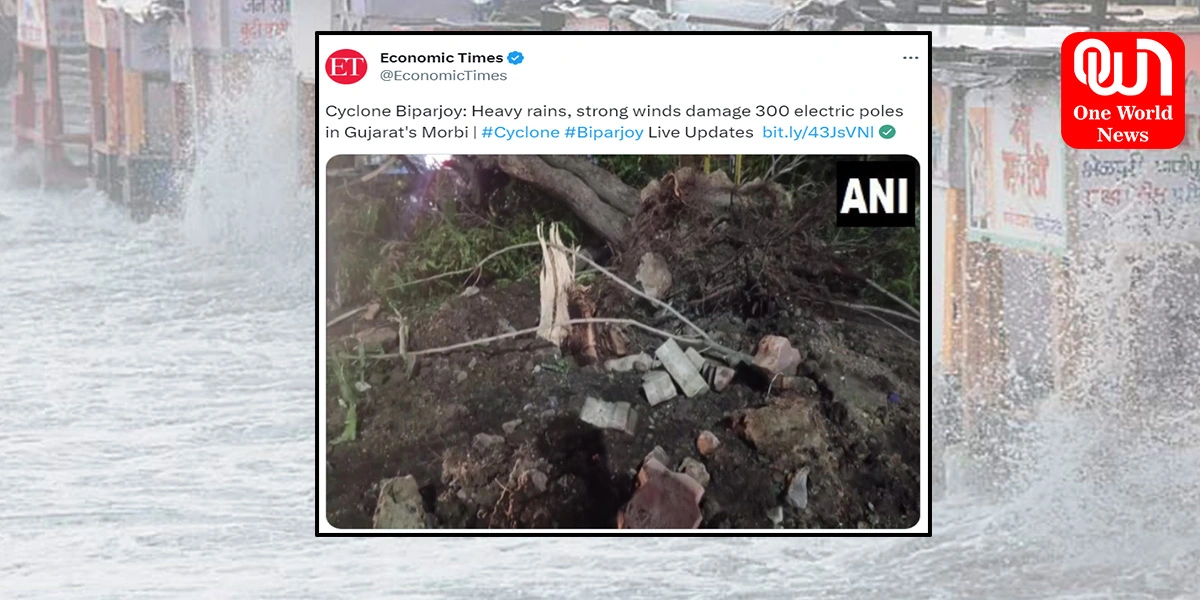Cyclone Biparjoy: Power Outages, Heavy Rains lash India and Pakistan
Tropical Cyclone Biparjoy triggers power outages and heavy rain across the western coasts of India and Pakistan, leading to widespread disruption and challenges in the affected regions.
Devastating impact: Cyclone Biparjoy causes power disruptions and widespread flooding; heavy rains lash India and Pakistan
Tropical Cyclone Biparjoy, a powerful weather phenomena originating in the Arabian Sea, has wreaked havoc across the western coasts with heavy rains, lashing India and Pakistan. The cyclone, characterized by its intense winds and heavy rain has caused significant disruptions, including power outages and widespread damage. As authorities scramble to address the aftermath, the affected regions brace for the extensive recovery efforts that lie ahead.
Cyclone Formation and Intensification:
Tropical Cyclone Biparjoy developed from a low-pressure area over the Arabian Sea, gaining strength as it moved northwestward. Favorable atmospheric conditions, such as warm sea surface temperatures and low vertical wind shear, facilitated its rapid intensification into a severe cyclonic storm. With wind speeds exceeding 100 kilometers per hour (62 miles per hour), Biparjoy posed a substantial threat to the coastal areas in its path.
Read more:- Cyclone Biparjoy Updates: Indian Navy On Standby
Biparjoy storm caused heavy rain in #Pali#CycloneBiporjoy #Cyclone #Rajasthan #Rains #Flood #India pic.twitter.com/fgNQ04Imlk
— Anil Kumar Verma (@AnilKumarVerma_) June 18, 2023
Power Disruptions:
One of the most immediate and visible impacts of Cyclone Biparjoy has been the widespread disruption of power supply. Strong winds and torrential rains damaged electrical infrastructure, causing outages in many affected regions. As transmission lines snapped, transformers malfunctioned, and substations suffered damage, millions of people were left without electricity, compounding the challenges already posed by the cyclone.
Heavy Rains and Flooding:
Biparjoy’s impact was further exacerbated by its torrential rainfall, leading to flash floods and waterlogging in various coastal areas. The incessant downpour overwhelmed drainage systems, causing streets, residential areas, and agricultural fields to be submerged. The heavy rains also triggered landslides in hilly regions, exacerbating the already precarious situation. The flooding disrupted transportation networks, impeding relief and rescue efforts.
Damage to Infrastructure and Communication Networks:
As the cyclone made landfall, it left a trail of destruction in its wake. Strong winds uprooted trees, damaged buildings, and tore off roofs, leaving communities vulnerable and displacing numerous individuals. The cyclone’s impact extended beyond the physical infrastructure, disrupting communication networks, including telephone lines and mobile networks. This made it difficult for the affected residents to seek assistance or establish contact with their loved ones.
Read more:- How to stay safe as Cyclone Biparjoy approaches
Humanitarian Response and Recovery Efforts:
Authorities in India and Pakistan swiftly mobilized disaster response teams and initiated evacuation efforts to minimize the loss of life. Emergency shelters were set up to provide temporary accommodation and essential supplies to those displaced by the cyclone. Search and rescue operations were launched to locate and assist individuals in affected areas. Relief organizations and government agencies collaborated to restore power supply, repair infrastructure, and provide medical aid to those in need.
Cyclone Biparjoy: Heavy rains, strong winds damage 300 electric poles in Gujarat's Morbi | #Cyclone #Biparjoy Live Updates https://t.co/8wlAwgxADw pic.twitter.com/l1Tw42YVrz
— Economic Times (@EconomicTimes) June 16, 2023
Future Preparedness and Climate Resilience:
Tropical Cyclone Biparjoy serves as a stark reminder of the increasing frequency and intensity of extreme weather events, attributed to climate change. Governments and communities must prioritize disaster preparedness, early warning systems, and climate-resilient infrastructure to mitigate the impacts of future cyclones. This includes reinforcing power distribution networks, improving drainage systems, and promoting sustainable development practices to reduce vulnerability in coastal regions.
Tropical Cyclone Biparjoy’s rampage across the western coasts of India and Pakistan has left a trail of destruction, including power disruptions, heavy rains, and flooding. The affected regions face the arduous task of rebuilding and recovering from the devastating impact. It is crucial that authorities and communities work together to enhance preparedness, strengthen infrastructure, and foster climate resilience to mitigate the potential devastation of future cyclonic events.
Register at One World News to never miss out on videos, celeb interviews, and best reads.








